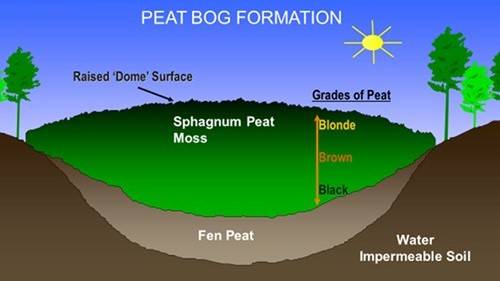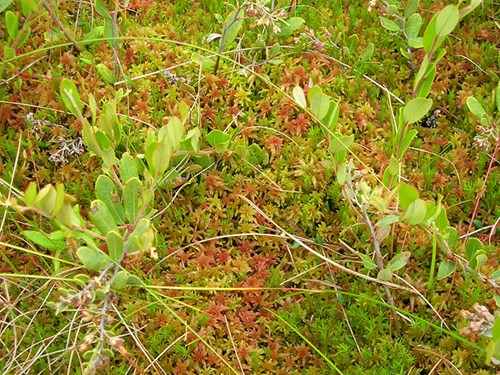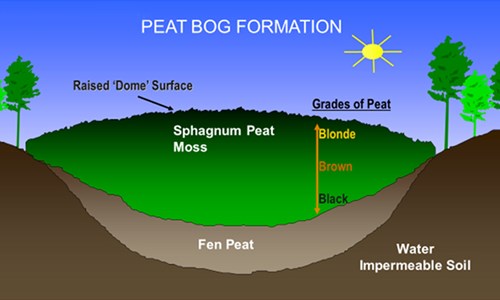Myth Series: Peat-Based Growing Media are Sterile


There is an assumption that peat moss and peat-based growing media are sterile. People are surprised to find out that this is not true. If peat moss was sterilized, then it would have no living organisms in it, like bacteria and fungi. However, the presence of natural, beneficial microorganisms in Sphagnum peat moss is essential for a healthy crop. So why does the myth that peat-based growing media are sterilized/sterile persist?
Origin of Sphagnum Peat Moss
Sphagnum peat moss represents roughly 70 to 80% of the total volume of most peat-based commercial growing media. Sphagnum peat moss comes from wetland ecosystems, called bogs, where Sphagnum mosses are the dominant plant species (Figure 1). Sphagnum peat bogs are widespread throughout Canada, the Baltics, Russia, Scandinavia, etc. and formed thousands of years ago after glaciers that covered these regions receded. Each year Sphagnum moss grows and floats on the surface of the bog and then dies back, forming a layer of dead material that accumulates at the bottom of the bog.
Over the millennia, the Sphagnum peat layer became thick and compressed. The top layer has young, live moss while the bottom layer has gone through a humification process which decomposes the Sphagnum peat moss into a dark, humus-like material (Figure 2).


Not Sterilized, but Essentially Sterile
Sphagnum moss, although not sterilized, is considered “essentially sterile” for several reasons:
-
Sphagnum Peat Bog Environment
All water that enters a Sphagnum peat bog comes from precipitation which has no mineral nutrients. Due to the low mineral nutrient content, it is easy for Sphagnum moss to create a very acidic environment, with a pH of around 4.0, which is close to the acidity of certain kinds of vinegar. Mineral nutrients are also needed to support the growth of microorganisms and most plants. This combined with the fact that Sphagnum peat bogs are located in wet, cold climates, does not support the weeds or pathogens that cause problems with greenhouse crops. -
Sphagnum Peat Bog Plants
Sphagnum peat bogs are not, nor have been, used as agricultural land, which means there is no monoculture in this natural environment, which can lead to the propagation of pests and diseases normally associated with cultivated crops. Another vector of diseases and insects is weeds. Most of the weeds that are typically found in the greenhouse or agricultural environment do not occur in Sphagnum peat bogs, so their seed is not found in Sphagnum peat moss. -
Peat Storage and Manufacturing
Before Sphagnum peat moss is packaged, it is harvested with vacuum harvesters and then piled on the edge of the Sphagnum peat bog where horticultural pests or weeds cannot access it. When needed, it is taken directly to the factory where it is screened and either baled or used for the manufacturing of growing media. Once the peat is baled and sealed in a plastic bag, pests cannot penetrate the package, unless it is punctured or damaged during storage.
Presence of Beneficial Fungi and Bacteria
In addition to the fact that there are few pathogens or weed seeds that could enter into a Sphagnum peat bog, there are beneficial microorganisms present that compete with pathogenic organisms, keeping their populations in check. Sterilizing Sphagnum peat moss would kill these beneficial microorganisms. Some of these beneficial microorganisms are anaerobic, which means they thrive in the absence of oxygen and may produce odiferous by-products if their populations build up. If so, these odor-causing by-products do not harm plants or people and will dissipate after opening the bale and exposing it to oxygen.
For more information, see our accompanying article entitled “Odors in Growing Medium” and also the following article on our website: "Presence of mold on growing media".
In conclusion, to say that growing media and peat moss are sterile or sterilized is incorrect. From an industry standpoint, there is no need to sterilize Sphagnum peat moss as it is essentially free of pathogens and weeds and sterilization would kill beneficial microorganisms that compete with root disease pathogens.